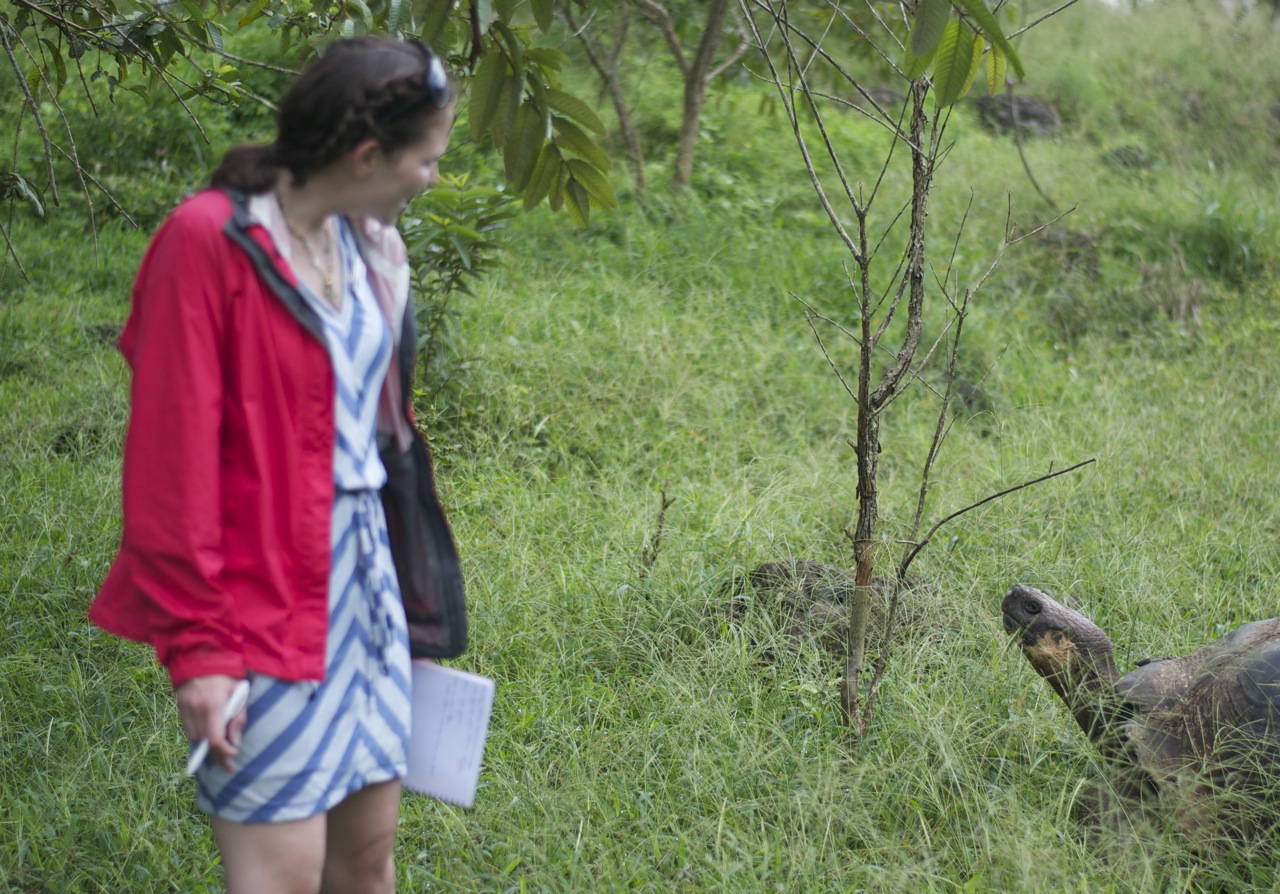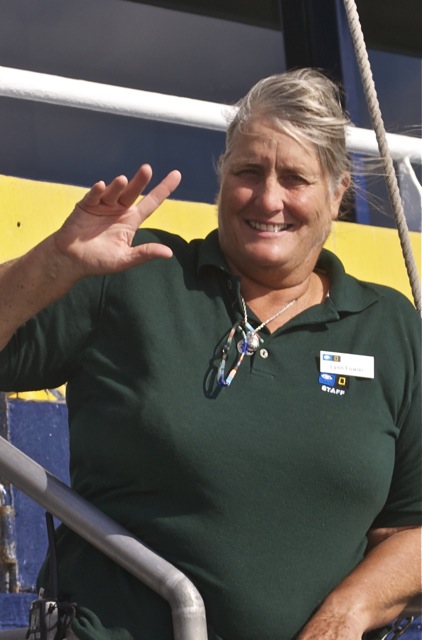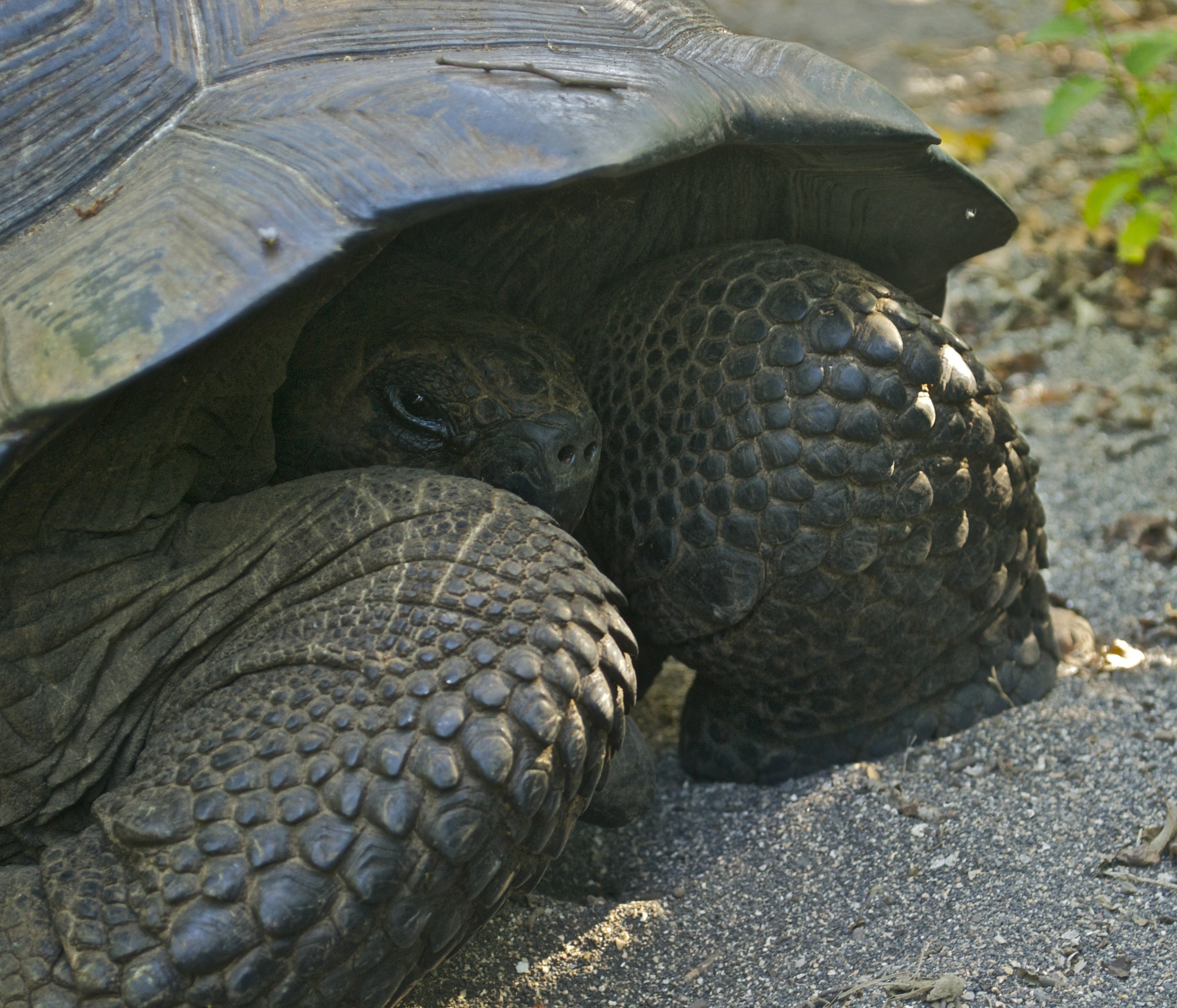
Every Monday for the next six weeks I’ll be posting about my recent trip to the Galápagos. After a week on a big boat, hopping from one imposing volcanic island to the next, I saw most of the odd creatures that Charles Darwin famously wrote about: century-old tortoises, finches with beaks of all sizes, swimming iguanas. But most of what I learned was new to me — like how the Ecuadorian government hired expert hunters from New Zealand to shoot down thousands of goats by helicopter, or how, in 1954, a massive geological uplift almost instantaneously raised one island’s coast 15 feet, taking with it mounds of coral that have since blackened with dust. Many of the stories converge on what’s, for me, a perplexing theme: that people can be sources of both ecological destruction and impressive restoration. As the climate changes, and population and tourism rates continue to skyrocket, it will be fascinating to see how the economic-political-scientific ecosystem of the Galápagos evolves.
I kick off the series (below, after the jump) with a story about one of my naturalist-guides, Lynn, who has lived on the islands since 1978.
*

When she was 26, Lynn Fowler began her Ph.D. dissertation with a seven-hour, 5,000-foot hike up to the rim of the Alcedo Volcano, smack in the middle of the large, seahorse-shaped island of Isabela. Alcedo gushes fluid lava every few decades. Lynn camped at its southeastern rim for a year and a half, returning to the mainland just once every three months to call her mother.
Alcedo was not an easy place to live. The rocky terrain wore holes through her sneakers. The days were hot (“I was a one-woman nudist colony most of the time,” she says), the nights were chilly, and the air carried “evil-smelling sulfur.” Lugging fresh water, at eight pounds per gallon, up the volcano every couple of weeks was exhausting. Eventually she learned to trap it herself from the garua, or mist, that surrounded Alcedo. Under a big tree she would rig up a large plastic sheet with a hole in the center to collect dew. She gathered five gallons a night this way, and once during the rainy season netted 50 gallons in an hour.
Lynn is a tough, no-nonsense type who never flinches. Even so, this new habitat occasionally scared her. She was hiking on November 13, 1979, at 8:45 am, when the Sierra Negra Volcano, about 20 miles south of Alcedo, erupted. “It was a great fireworks show — spectacular and frightening,” she recalls. For the next five weeks, she could hear lava spilling into the ocean.

Another pain in the neck: Lynn’s several-hundred-pound Galápagos tortoise neighbors. About one-third of all of these slow and dimwitted beasts live on Alcedo. They’re nosy, so Lynn put up a wood fence. That worked, for the most part. One time she returned to her campsite only to find an enormous tortoise plopped on her tent. It’s not as funny as it sounds — without shelter she would have had an uncomfortable and potentially dangerous night. She ousted him by poking a stick in the soft flesh between tail and leg.
But Lynn couldn’t very well stay angry at the tortoises. They were the reason for her trek.
Several hundred thousand giant tortoises lived in Galápagos when the first European explorers arrived in the 16th century. The animals, easily catchable, provided the men with tasty meat and — more important in a place that’s dry half the year — water. Tortoises can live more than a year without water because they store it in their bladders. (According to Darwin, tortoise-bladder water is “quite limpid, and had only a very slightly bitter taste.”) By the 1970s, the Galápagos tortoise population had plummeted to around 3,000.
Lynn wanted to find out about one particular aspect of the human invasion: donkeys. In the 19th century, sailors introduced burros on the islands to help carry the tortoises around. Some burros got loose, of course, and their numbers rose quickly. When Lynn arrived, about 600 donkeys lived on Alcedo. She wanted to know, were donkeys and tortoises competing for food?
She spent day after day following individual tortoises. It was usually tedious. Tortoises are solitary and don’t do much except sleep, eat and mate. But occasionally she’d witness something interesting. Once, an unsuccessful sexual attempt (poor dudes have lots of these, apparently) left a male tortoise flipped on its back. His lady friend took off, leaving him writhing on the ground. Lynn stuck around to collect minute-by-minute observations of his behavior. It took him two hours to get back on his feet.

Lynn’s data ultimately showed that tortoises and donkeys were not competing for food. In the lush wet season, both species feasted. In the harsh dry season, the tortoises lived quite easily on what they’d stored in their bladders, while many of the donkeys starved. But the donkeys were harming the tortoises — by trampling their nesting grounds, making it much more difficult for their eggs to survive.
Lynn’s tortoises provide just one of many examples of how foreign species (not only donkeys, but goats, cats, rats and insects) intentionally or unintentionally introduced by people have harmed native populations in the Galápagos. Later in this series I’ll tell you about some of the clever strategies that Lynn and other conservationists have used to keep these invaders in check — and to bring back the tortoises.
*
Photos by Randal Vegter except the aerial shot, which came from NASA
Fascinating! So glad you’re doing this series, looking forward to the next installment.
Nice job and thanks for the heads up. I look forward to the next installment.
Enjoyed spending the week with you on the “big boat”. Can’t wait for the next installment.
Great job, and a fond memory of our trip. I look forward to reading your future blogs. Now I know what all the note taking was for!
Like Carol…mystery solved. All the note-taking had to be for something good! Really enjoyed your first installment and absolutely look forward to more! Thank you.
Nice job! Looking forward to reading the next blog. Oh, the NASA photo was great!
Loved meeting you and your husband. Look forward to your observations from our journey.
We enjoy Galapagos Monday and look forward to more! Thanks very much.
Weren’t we all so fortunate to meet Lonesome George… just in time! That’s an historic memory.
Thanks very much for Galapagos Monday! Weren’t we the fortunate ones to meet Lonesome George in time.